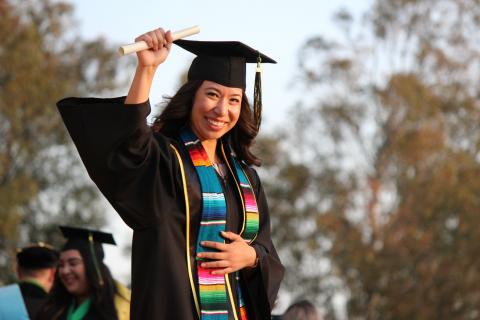Turning the Tassel: History and Symbolism of a Graduation Tradition
May 22,2024
Graduation ceremonies are rich with traditions that mark the significant transition from student to graduate. One of the most recognizable and anticipated moments during a commencement ceremony is the turning of the tassel. This simple yet profound gesture holds deep historical roots and symbolic meaning. Let's explore the history and symbolism behind turning the tassel at 168极速赛车官方入口:graduation.
Historical Roots of the Graduation Cap and Tassel
The graduation ca༒p, also known as the mortarboard, has its origins in the medieval European universities of the 12th and 13th centuries. Scholars and clerics wore similar caps and gowns to denote their status and academic accomplishments. The square shape of the mortarboard is believed to be inspired by the biretta, a cap worn by Roman Catholic clergy, symb🌊olizing the scholarly nature and rigorous study associated with higher education.
The tassel, which is attached to the mortarboard, initially served as a functional ornament but has since evolved into a key element of graduation aꦰttire. The practice of moving the tassel from one side of the cap to the other has become an integral part of graduation ceremonies, signifying a student's transition from candidate to graduate.
Symbolism of Turning the Tassel
The act of turning the tassel carries several layers of symbolism, encapsulating the journey, achiev🌼ements, andℱ future aspirations of graduates.
-
Academic Achievement: Turning the tassel symbolizes the completion🦩 of a significant academic mileꦰstone. It is a visual representation of the hard work, dedication, and perseverance required to earn a degree.
-
Transition and Transformation: Moving the tassel from the right side of the cap to the left signifies a rite of passage, marking the transition from one phase of life to another. For high school graduates, it represents moving on to highe♐r education or the workforce. For college and university graduates, it signifies the end of formal education and the beginning of their professional careers.
-
Unity and Celebration: The collective act of graduatౠes turning their tassels simultaneously fosters a sense of unity and shared accomplishment. It is a moment of collective celebration, recognizing the achievements of the entire graduating class.
-
Future Endeavors: The gesture also represents the graduates' readiness to take on new challenges and pursue their future goals. It is a moment of looki♋ng forward to the opportunities and responsibilities that lie ahead.
Variations and Customs
While the general practice of turning the tassel is widely observed, there can be variations in customs depending on ꦺth♎e institution or level of education.
-
High School Graduations: Typically, hi⛎gh school graduates start with the tassel on the right side of the cap and move it to the left upon receiving their diploma.
-
College and University Graduations: At the collegiate level, the practice is s🐭imilar, with the tassel starting on the right side and being moved to the left once the degree is conferred.
-
Individual vs. Collective Turning: In some ceremonies, graduates may t🌼urn their tassels individually as they receive their diplomas. In others, the entire graduating class may be instructed to turn their tassels simultaneously at a specific moment during the ceremony.
The tradition of turning the tassel at graduation is more than just a ceremonial gesture; it is a powerful symbol of academic achievement, personal growth, and future aspirations. Rooted in centuries-old academic customs, this practice unites graduates across generations and disciplines, celebrat💧ing their hard-earned accomplishments ཧand marking the beginning of new journeys.
As graduates move their tassels from right to left, they par🍬ticipate in a meaningful rite of passage that honors their past efforts and looks forward to the promise of their future endeavors. Whether observed in a high school gymnasium or a university stadium, the turning of the tassel remains a timeless and cherished tra💝dition in the tapestry of academic ceremonies.





